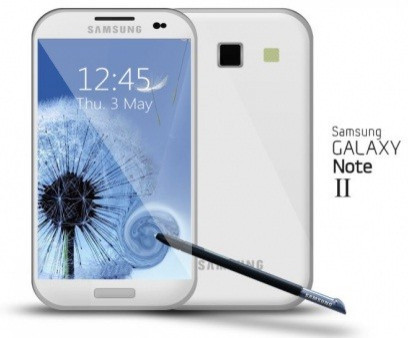Samsung Galaxy Note Gets Android 4.0 Ice Cream Sandwich Update on AT&T

Android 4.0 Ice Cream Sandwich will finally be released on all AT&T Samsung Galaxy Note devices on Tuesday, which will improve multitasking and provide swifter navigation and well as introduce new features.
The 5.3-inch phone/tablet hybrid's operating system won't look that different with the update, but a whole host of subtle features have been added. These include Annotation of PDF files and S Memo file importing, which include maps, photos and other images saved with the S Pen, CNET reports.
New templates have also been added to the phone with ICS that will help create info-rich multimedia notes. With Shape Match, sloppy drawings and diagrams performed with the S-pen are directly converted into straight lines for clear presentation.
ICS also comes with handwriting-to-text mode that turns scribbles into legible typed text, even when writing quickly, according to a test carried out by CNET.
More advanced apps designed for Android 4.0 can now be downloaded on the Galaxy Note, which enhance the functionality of the phone.
The Galaxy Note has been heralded for its big and beautiful 5.3-inch AMOLED display, which Simon Stanford, VP of Samsung Telecommunications and Networks for Samsung UK, says is perfect for gaming, video and even PowerPoint and Excel presentations. I can edit those, look at them and share them, he says.
People don't have to have a tablet and smartphone -- it can be done all in one device -- which is exactly what people are using it for, Stanford added.
Responding to the phone's gigantic size, Stanford told CNET that mobile users are generally making fewer phone calls. What we are finding is that more people are using more data and using voice less, he says. This particular device [the Note] allows you to use all the data you can.
Meanwhile, new rumors about the Samsung Galaxy Note 2 have emerged, and they suggest that the phone could be unveiled in August, followed by an October launch date.
The phone will be released at the IFA consumer electronics trade show in Germany, according to MK Business News.
Samsung is allegedly timing the launch of its phone/tablet hybrid to coincide with the release date of Apple's iPhone 5.
The updated version of the Galaxy Note is expected to come with a larger screen that exceeds five inches, according to the report. The phone is also rumored to come with an unbreakable plane UBP display, which is thinner than its predecessor and will likely result in an overall slimmer and sleeker design.
Jelly Bean
The Galaxy Note 2 is expected to get Android's 4.1 Jelly Bean software, which was unveiled at Google's annual developers conference last week. The Android 4.1 Jelly Bean update comes with a host of features that will enhance the Galaxy Note. Its performance is significantly faster than Ice Cream Sandwich. Jelly Bean is built to harness the power of mobile processors better, and to improve CPU utilization, according to Google.
Project Butter
The main aim of Jelly Bean's Project Butter is for devices to run with smooth graphics and a seamless response rate. It does this by predicting where the user's finger will be.
Google Chrome Default Browser
Google Chrome on Jelly Bean has replaced Honeycomb and ICS' default browsers. It's speedy, elegant and one of the best browsers on the market.
Google Now
This is a new feature to Jelly Bean that is run through a Siri-like voice recognition tool. It gives you answers and prompts based on your interests, which are identified through your Google Search history, calendar and location data.
Widgets
On Jelly Bean, widgets can be re-sized and organized by users manually.
Improved Camera App
The Jelly Bean camera app has been improved to enhance the way photos can be viewed. Users can access their photos in an instant with a swipe gesture, and a pinch-in-zoom gesture turns the screen into a filmstrip.
Android Beam
The NFC file-sharing interface has been significantly improved through Jelly Bean. Users can now hook up to another NFC-enabled Android phone by tapping it against another device. Information is then transferred between the two phones through Bluetooth.
© Copyright IBTimes 2024. All rights reserved.





















